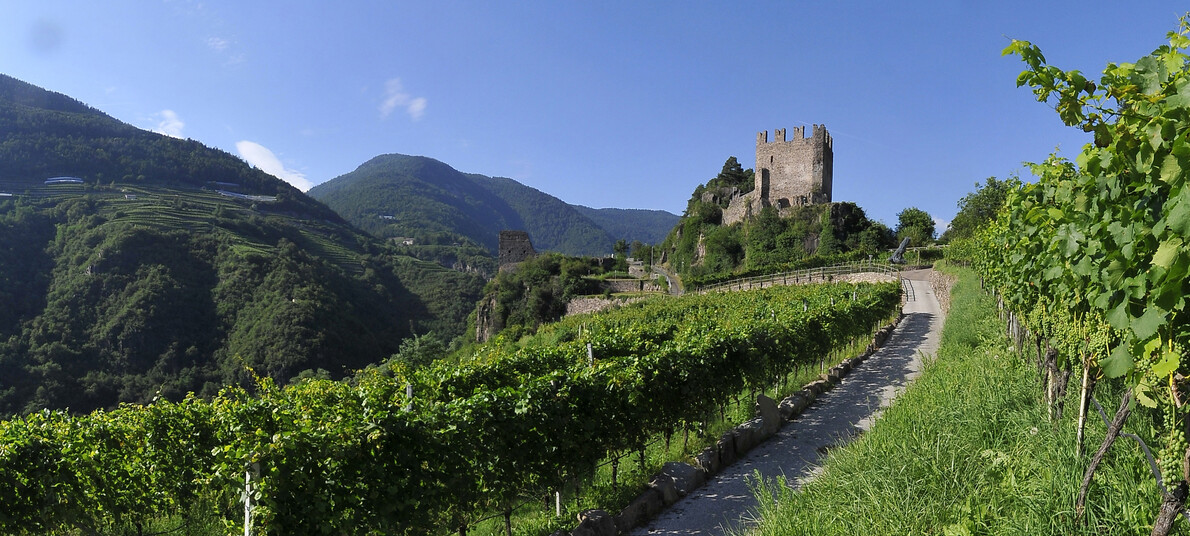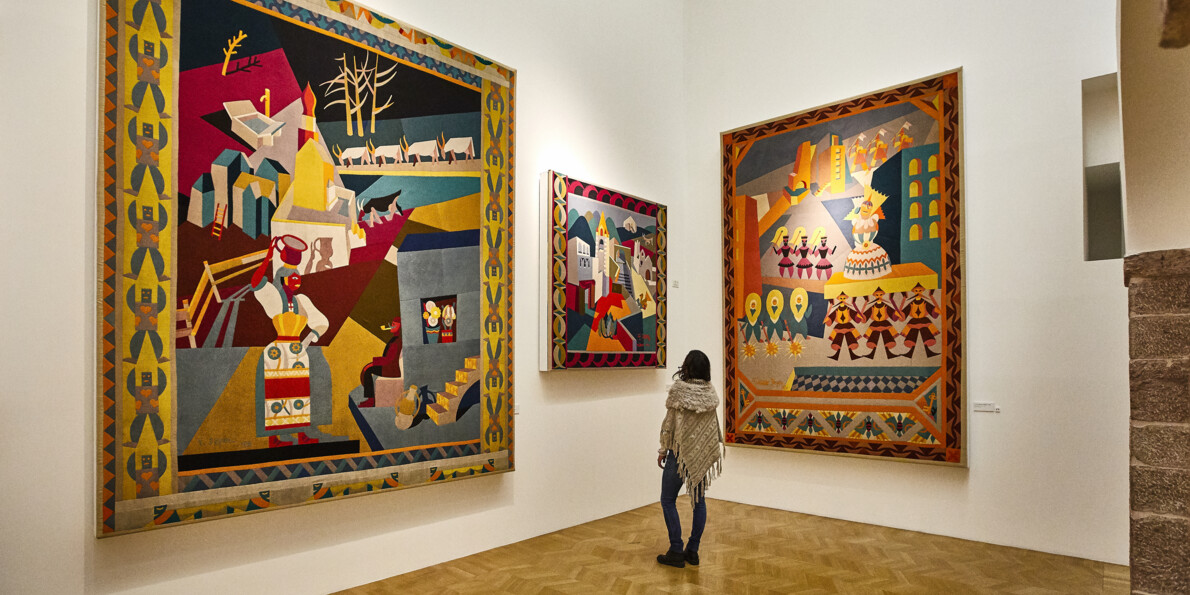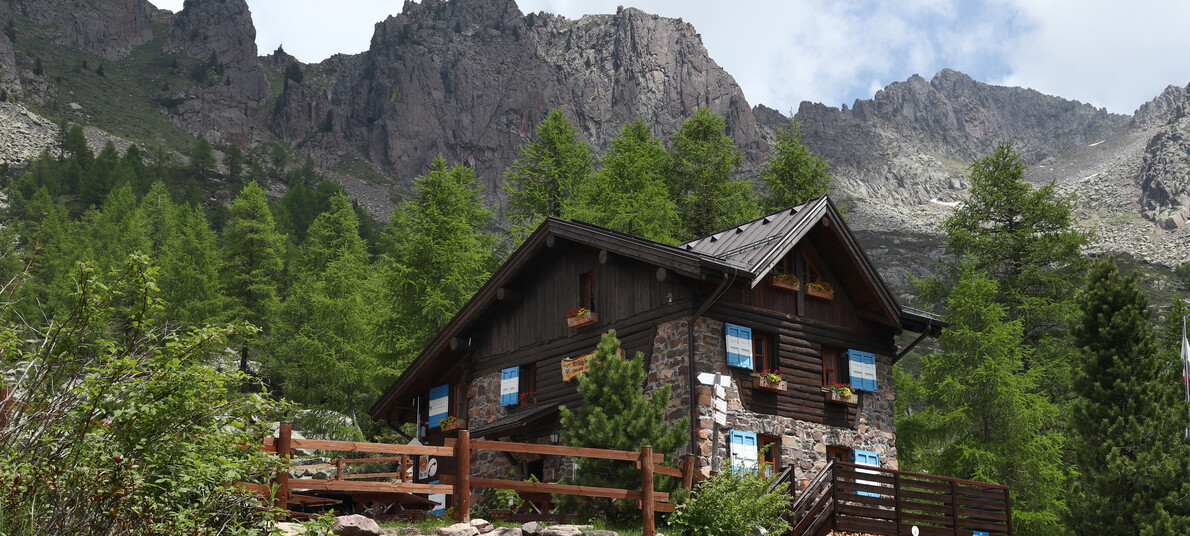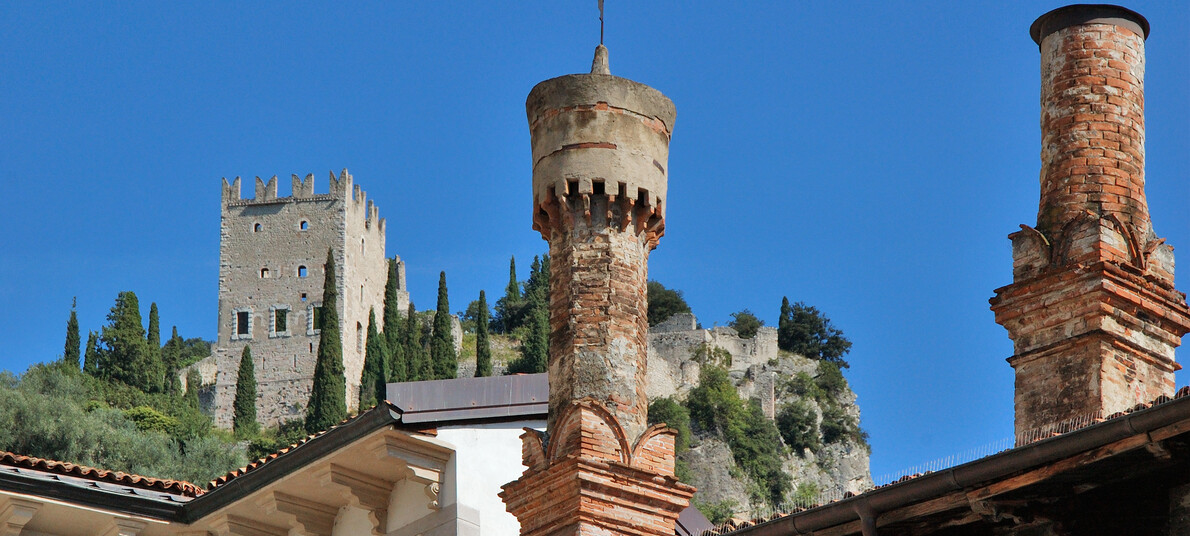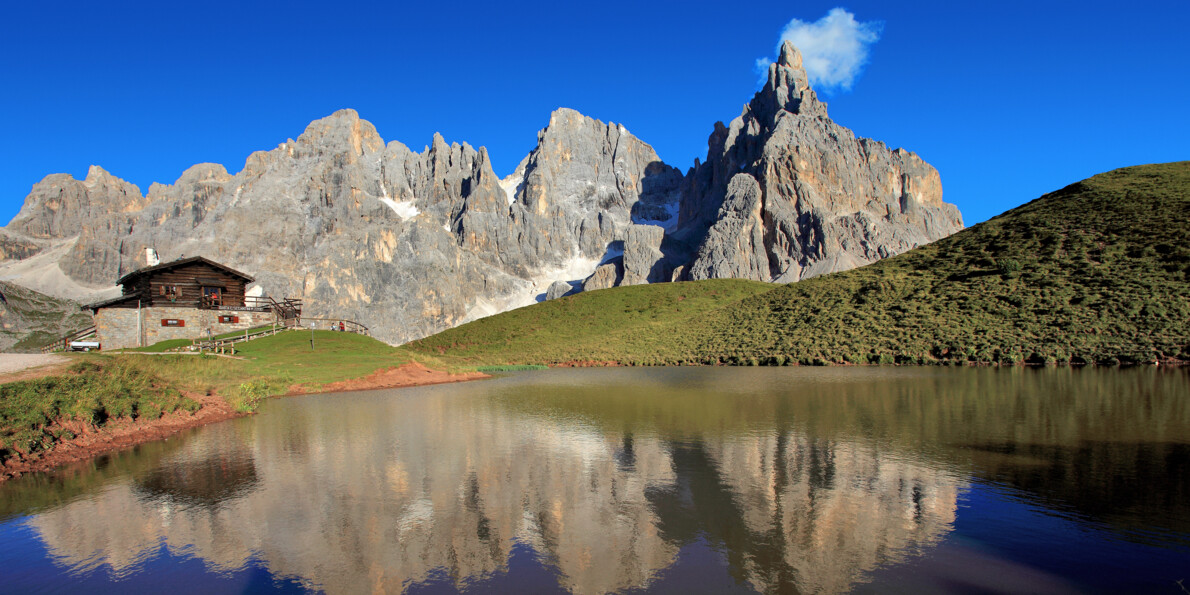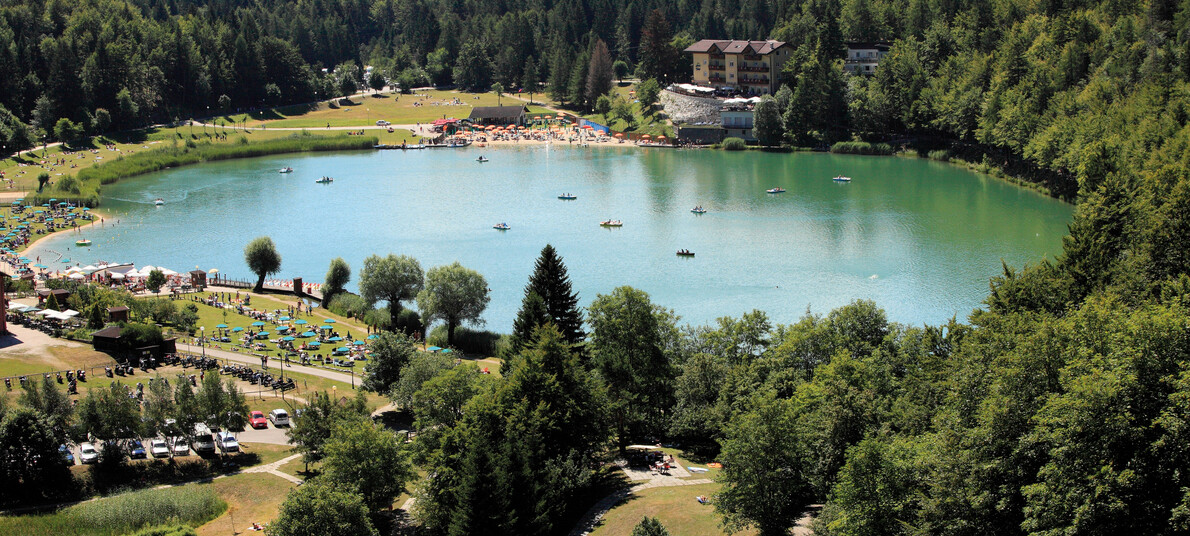In the footsteps of great artists
From Dürer to Freud, from Depero to Segantini: a journey through places that captured the imagination of great artists and thinkers
The mountains, the simple rural life, the alpine idyll and the raw beauty of Trentino’s landscape are superbly grasped by Dürer’s watercolours, by Mozart’s memoirs, by the pen of many Austrian authors and by the imagination of two innovative Trentino- born artists: Fortunato Depero and Giovanni Segantini.
For lovers of art and literature, we handpicked six itineraries to discover Trentino today through the eyes of great artists from the past.
Albrecht Dürer - Val di Cembra: the landscape preserved in colours
Towards the end of 1400, the German painter Albrecht Dürer embarked on a long journey to Venice. He made his way through Val di Cembra capturing the landscape in his watercolours. Worthy a visit are the Lago Santo - a drop of deep blue water framed by lush forests of fir tree – and of the ruins of Segonzano Castle, which appears in one of the paintings.
As we visit these places today, we can appreciate the emotional journey of travellers who ventured into higher grounds to avoid the swampy valley floor.
Fortunato Depero – Rovereto: the home of Futurism
Can you picture the vibrant colours and the geometric shapes that defined Futurism? Or those vintage posters, like the iconic advert for Campari Rosso, with its unique cone bottle designed by Depero?
Casa D’Arte Futurista, in Roveto, is certainly a place worth visiting as it encompasses the powerful design of Depero. A unique building, the first museum dedicated to Futurism in Italy, a project overseen by the artist himself in every detail: artworks, publications, tapestries, furniture and toys epitomize the striking graphics and colourful style of the Futurism master. Every object, every image and art creation evokes the early 1900s avant-garde atmosphere and the pervading spirit of innovation of the time.
Robert Musil - Valle dei Mocheni - “Grigia” an introspective journey
The writer Robert Musil lived for a year in Valle dei Mocheni while serving as an officer in the Austro-Hungarian army during the First World War. The author fell in love with the valley, an isolated area unknown to most, where people spoke an old derivative of German, a language deeply rooted in its rural origins.
The Enchanted Valley inspired “Grigia”, the story of the pain- stricken love between a foreign man and a native girl who, like the mountain, was unreachable and solitary. Today, you can retrace the writer’s steps along the Musil en Benstol itinerary that connects various locations around the valley and evokes the soul-searching journey of the protagonist of the story.
Giovanni Segantini - Arco: the spiritual beauty of alpine landscape
For the first seven years of his life, the divisionist painter Giovanni Segantini lived in Arco. After a troubled adolescence, he became an accomplished artist spending most of his life residing on the Swiss Alps.
The nexus with Trentino is to be found more in his artworks than in his biography. The alpine sceneries, captured in Segantini’s canvases, convey the spirituality of rural life celebrating both, its beauty and poverty. Mountain landscapes, family life, the connection with nature and farm animals are brought to life on canvas, revisited through the artist’s divisionist eye.
If you wish to find out more and get up close with some of Segantini’s artworks, we recommend a visit to the Gallery in Arco, at Palazzo dei Panni, a small interactive museum dedicated to the artist, to appreciate the painting style of the late 1800s.
Arthur Schnitzler - San Martino di Castrozza : la signorina Else
The mountain landscape of Cimon della Pala is the backdrop of one of the most controversial novels by the Austrian author Arthur Schnitzler. A hotel in San Martino di Castrozza sets the scene for the internal conflict of signorina Else, a nineteen years old girl from an affluent Viennese family.
In Schnitzler’s story, the imposing nature of the Dolomites is in contrast with the conservative and oppressive world of the character, trapped between social obligations and her unfathomable psychological battle.
Neither nature, nor the upper-class life – deceitful and suffocating – are a valid reason to live for the young woman who struggles to come to terms with her personality. Her monologue, epitome of the 20th century literature, swings between pride and vulnerability reaching its climax with an extreme and scandalous gesture. A novel to read perhaps in a corner of a historic hotel with a good cup of tea to experience authentic retro atmospheres.
Freud, a tourist in Lavarone
Between the end of 1800 and early 1900, Trentino became a much sought after travel destination for wealthy Austro-Hungarians who enjoyed the hospitality of the region, part of the Empire and known back then as the “Italian Tyrol”. One place was particularly cherished by the great psychoanalyst Sigmund Freud: Lavarone, with its newly built Hotel du Lac overlooking the mountain lake.
The “Father of Psychoanalysis” spent few summer vacations with his family in 1906 and 1907. He also returned in 1923 when, after WWI, the region became part of Italy.
In his travel journals, Freud describes Lavarone as a remote place where he and his family enjoyed seclusion and tranquillity. He recalls swimming in the lake, good food, woodland walks and visits to the nearby towns of Caldonazzo, Molveno and Lake Garda.

